This was published 1 year ago
‘Maybe we could put 100 crocs in a city park’: A conservation issue gets snappy
Never smile at a crocodile, especially in northern Australia, where booming numbers have led to increased calls to separate the predators from people – and new dilemmas when it comes to protecting the species.
By Frank Robson
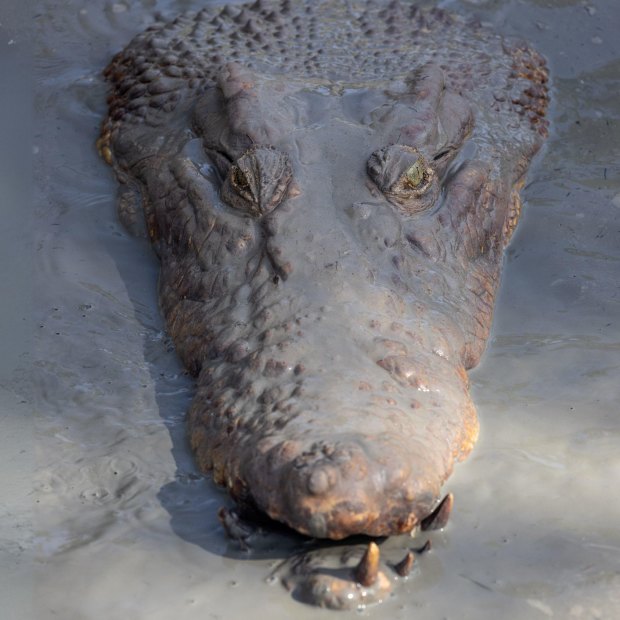
Crocodiles have flourished in Australia after being made a protected species in the 1970s.Credit: Paul Harris
Under a starry sky, a V8 ski-boat growls up Queensland’s twisting Fitzroy River about 40 kilometres inland from Rockhampton. When the boat stops, silence washes over us like a wave. “Can you see the eyes?” whispers the man at the wheel, directing his searchlight at the bank. “There! By that tree!”
At first, all I see is mud and tangled undergrowth. Then two red pinpricks glitter from the water directly ahead of us. Borne by the current, we glide closer. “There! Right there!” For a moment, the crocodile –more than two metres long – floats on the surface right beside the boat. Then it slips calmly beneath the muddy water and disappears. We see others over the course of the night, perhaps a dozen pairs of jewelled eyes burning from the darkness while Bobby Vee’s creepy hit from the 1960s – The Night Has a Thousand Eyes – earworms in my head like a stalker’s mantra. But it’s the image of that first crocodile that endures: an ancient, other-worldly thing, pale and motionless among the shadows, risen from places where its kin have existed for more time than humans can rationally consider.
High above the river, passenger jets slink by, bound for Rockhampton’s busy airport. Occasionally, we pass spots where crocodiles were hunted and shot for centuries (including “Big Ben”, a 6.8-metre giant taken nearly 150 years ago whose stomach was said to contain “assorted” human bones), or see the lights of isolated farm properties blinking cosily through the trees.
Behind us, a larger glow rises from the ever-growing central Queensland city of Rockhampton, where a barrage – built to regulate floodwaters but also an
effective crocodile barrier – divides the Fitzroy River. Downstream of it, the river widens before flowing into Keppel Bay; directly upstream lies a 20-kilometre stretch of river which serves as the city’s water sports playground and a training area for Olympic rowers.
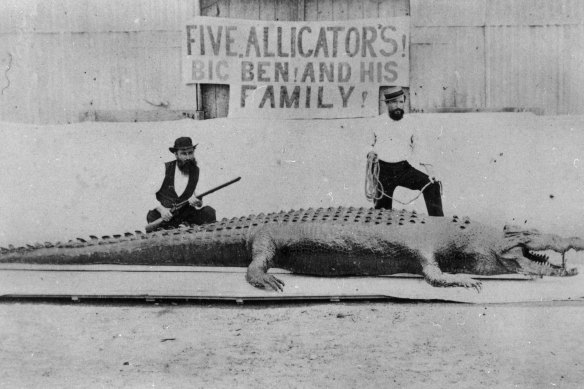
Big Ben was 6.8 metres long and ruled Alligator Creek in Yaamba, near Rockhampton, nearly 150 years ago. After he was killed, his stomach was said to contain “assorted” human bones.Credit: State Library of Queensland
Known as Australia’s beef capital, the “Rocky” area is home to more than 80,000 people and about 3 million cattle. It also marks the southern extremity of Australia’s resident populations of saltwater or estuarine crocodiles (Crocodylus porosus), the world’s largest and most formidable people-eating reptile.
My guide on the river tour is the boat’s owner, Peter Darby, a competitive skier and president of the Rockhampton Water Ski Club. As crocodiles in Australia return from near-extinction, Darby’s club is part of a push to have them removed from the area. “If we [don’t],” says Darby, “sports and recreation here will become unsustainable.”
Between croc spotting we drift silently, talking of (among other things) the hunting days of old, when the reviled “monsters” were slaughtered for fun, and pubs took to displaying their grotesquely snarling remains. After World War II, when croc skins became valuable overseas, hundreds of returned diggers dusted off service issue rifles and went feral across northern Australia, killing every “ugly brute” they came across. Within about 20 years, the species had all but disappeared.
By the early 1970s, when protection began – first in Western Australia in 1970, then, a year later, in the Northern Territory, followed by Queensland in 1974 – a generation was growing up largely unaware that crocodiles had existed here. They swam and played in once-croc-infested estuaries and river systems across the country’s north, not realising it was what veteran biologist Dr Laurence Taplin calls an “unnatural environment”. Today, as the species regains numbers and the natural environment is restored, older Australians who were part of the croc-free generation often lead demands for “serious” culls.
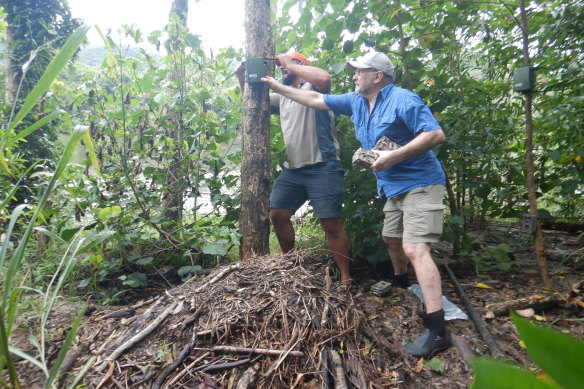
Biologist Laurence Taplin (front) says “crocodiles prefer to leave people alone”.Credit: Courtesy of the Department of Environment and Science
Rockhampton has become the latest example of the unfolding conservation dilemma: how to separate people and predators as the now-protected species retakes its place in the ecosystem.
SInce 1975, there have been 47 crocodile attacks on people in Queensland, 17 of them fatal. Over roughly the same period, 77 attacks occurred in the NT (23 fatal) and 28 (three fatal) in WA. More Australians were killed by sharks in the same time frame, yet calls for regular culls to control rejuvenated crocodile populations tend to follow every croc attack.
With an estimated 100,000-plus crocodiles in the wild, the NT has many more than Queensland, which in 2019 was estimated at about 25,000. In terms of density in surveyed areas, the NT has a flourishing 5.3 individuals per kilometre compared with just 1.7 per kilometre in Queensland, where the species is still listed as vulnerable. Yet “managing” potentially dangerous crocs is a lot more difficult in the Sunshine State, where the predators share their prime locations with ever-growing numbers of people.
Some good news, at least for coastal-dwelling people south of Rockhampton, is that theories about crocs “migrating” south as global warming increases water temperatures aren’t scientifically supported. “There are absolutely no resident populations of crocodiles south of the Fitzroy River,” says Laurence Taplin, a leading authority on croc distribution in Queensland. Taplin believes lone animals spotted over time as far south as Northern NSW are “vagrant travellers” separated from family groups.
Peter Darby didn’t give much thought to crocs until recently, even when he and his young children sped about the river on skis: “I’d tell [visitors to the area] that I ski here, and they’d be, like, ‘How could you possibly do that!? There’s crocs in there!’ ” Darby and other locals shrugged off the risks, just as surfers do with sharks. After all, there had been no attacks in the river for as long as anyone could remember, and most sightings involved crocs deemed too small to threaten human lives.
Social media ran hot over the issue for months, largely in support of the croc killer.
Even after 2018 – when station hand Luke Orchard, then 31, pleaded guilty in the Rockhampton Magistrates Court to killing a whopping 5.2-metre crocodile on the riverbank the previous year – rowers, fishers, canoeists, dragon-boaters and skiers continued to do their thing in the recreational area, only 20-odd kilometres downstream from where the croc, described in court as “iconic”, “rare”, “culturally significant” and “century-old”, was shot between the eyes.
Orchard was fined $10,000 for the shooting, but no conviction was recorded. At the time of the killing, he was employed at the Belmont Research Station, an experimental farm owned by AgForce Queensland, where his father, Phil Orchard, was the property manager. Luke Orchard had told police he shot the croc because it was eating calves along the property’s river frontage, but the court heard that no official reports of the claimed livestock losses were made. Social media ran hot over the issue for months, largely in support of the croc killer.
Anecdotal claims continue of other illegal shootings along the Fitzroy’s upper reaches and of an area where eight slain crocs were supposedly buried by an excavator over recent years. But it wasn’t until May this year, when another big crocodile took to sunning itself on the river bank in the recreational area itself, that a sort of retrospective panic set in. Following reports of the 4.6-metre predator “threatening” fishers in the area, Darby and others were instrumental in having it trapped by rangers and removed.
“After that,” Darby says, “I did begin to question my recreation … [now] when we’re done skiing, we don’t waste time in the water! We get straight out and into the boat.” He and his family live next to the water ski club, 15 kilometres upriver from the barrage in Rockhampton’s CBD. Like other members of the Fitzroy River Users Group, the club has joined a push to have the recreational area extended 20 kilometres upriver and rezoned from C to B under Queensland’s Crocodile Management Plan (CMP), so that all crocodiles found there can be trapped and removed to farms. Under the CMP, coastal areas have designated zones from A to F.
In A and B zones, typically applied around busy urban areas like Cairns and Townsville, all crocs are “targeted” for removal to farms or zoos – unless they’ve attacked someone, when they’re hunted and shot. C zones allow for people in proximity to crocodiles with only animals two metres or longer, or those “displaying dangerous behaviour”, able to be removed.
“I have a lot of sympathy for the rangers,” says John Lever, owner of the Koorana Crocodile Farm, where most “problem” crocs in central Queensland end up. “But they’re hamstrung … if they can’t actually witness [the dangerous behaviour] for themselves, they often end up doing nothing. Which is ridiculous … that [recreational area] should be permanently monitored because there’s always a potential threat.”
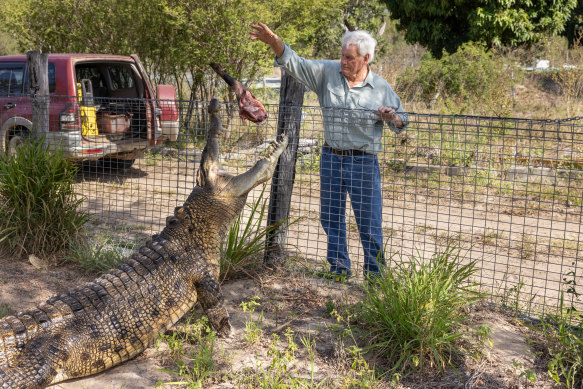
John Lever, owner of Koorana – the country’s only saltwater crocodile farm. He says he “has a lot of sympathy for rangers”.Credit: Paul Harris
Lever’s farm/tourist attraction on what locals call Savages Island, a swampy tidal lowland 20 minutes north-east of Rocky, is Australia’s only saltwater croc farm. Which seems odd until he explains that salties regularly move between the sea and inland river systems, where water can be predominantly fresh. (Smaller, and a lot less dangerous, freshwater crocodiles were protected along with salties. They occupy the same latitudinal belt as their burly cousins.)
When I arrive at the farm’s café, Lever calls for two croc burgers and a couple of frosty rieslings. He tells me crocodile meat has the “texture of cork with a slight marine flavour” – which, after a couple of bites, seems pretty accurate. (Later, transcribing our conversation, I realise he didn’t say cork but “pork”.)
Lever is among our most knowledgeable, hands-on crocodile experts. At 81, despite a slightly saurian gait (two hip replacements), he retains the sort of high-octane enthusiasm common among those who love what they do. The one-time schoolteacher from Victoria has spent most of his life not with kids but crocodiles, including seven years running wildlife preservation projects in Papua New Guinea and four decades at the Koorana farm.
He talks of how Papuans taught him the importance of their crocodile totem: “When, in the beginning, the earth was just a big ball of water, and their god lived on that ball, and he was a crocodile [who] gave birth to man and woman.” Or how scientists came to learn that the apex predators weren’t only the end of the food chain but also the beginning: “What they eat on land and excrete into water fertilises the plankton that start the growth of the food chain.” Or their ability to survive “above all other animals, unchanged”; or the “tricks” that enabled their survival, such as hatchlings’ ability to spend their first two months without food, or grown animals doing the same thing for a year, or being able to remain underwater for five hours on a single breath.
When I use the word “dread” to describe a common reaction to crocs, Lever says, “Even as a kid, I was never ‘filled with dread’ over crocodiles; I was filled with excitement.” Touring the farm in his old 4WD, we see adult breeding pairs basking on sunlit banks, as still as statues. “Energy conserving,” notes Lever. “Resting, they can get their heart rates down to two beats a minute … [in action] they can instantly pump it up to 200 beats a minute.” Breeding season runs from September to May.
What’s the mating act like? “Gentle,” Lever all but whispers. “It’s actually lovely to watch … she wipes her head over the top of the male, then sinks down his body and blows bubbles. There’s a lot of foreplay, and the pleasure of it is quite evident.” The rumbling growl crocs produce by vibrating their windpipes can be part of the mating ritual or an expression of territorial dominance.
There is no single population of estuarine crocs, but rather geographically separate family groups. Laurence Taplin, an adviser to the Queensland Government, tells of six genetically distinct units identified throughout the state’s north by himself and fellow biologist Dr Matt Brien, who is now a regional director with the Queensland Parks and Wildlife Service. The habitats occupy both sides of Cape York, where the biggest numbers and genetic diversity exist, with population numbers declining southward through coastal areas to Rockhampton.
Most fatal attacks on humans in Queensland have occurred between Townsville and the Daintree River, south of Cooktown, and most victims have been adult males. Taplin says fatalities usually involve animals over four metres. Non-fatal attacks are typically made by crocs between two and three metres, which tend to bite and then release people who struggle or fight back.
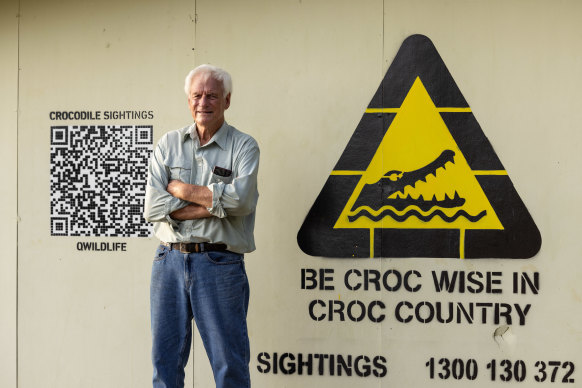
John Lever at Koorana Crocodile Farm in Coowonga. Croc burgers are served in its cafe.Credit: Paul Harris
Australia’s most harrowing survival story in recent times involved Sydney academic Dr Val Plumwood, knocked from a canoe while paddling alone in the NT’s Kakadu National Park in 1985. Reading of Plumwood’s experience becomes almost unbearable as she describes what would typically be the last moments of a person’s life. “The [death] roll was a centrifuge of whirling, boiling blackness, which seemed about to tear my limbs from my body, driving water irresistibly into my bursting lungs. It lasted for an eternity, beyond endurance, but as I seemed all but finished, the rolling suddenly stopped.”
In chest-deep water, gasping air, with the crocodile – “It did not seem like a large one” – maintaining its pincer grip between her legs, Plumwood was amazed to find herself still alive. “As we rested together, I had just begun to weep for the prospects of my mangled body when the crocodile pitched me suddenly into a second death roll.”
On and on it went – a third roll, then several attempts to drag herself clear via the branch of a tree, each ending with her drawn back into the animal’s jaws – “playing with me like a huge growling cat with a torn mouse” – until, finally, she reached the top of a muddy bank. Severely injured, Plumwood limped and crawled several kilometres to get help, later spending a month in intensive care and undergoing extensive skin grafts.
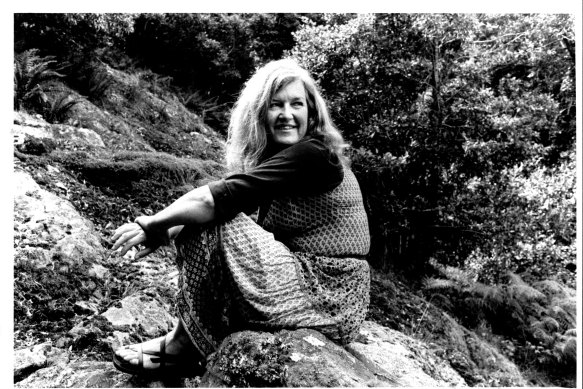
Val Plumwood survived a crocodile attack alone in Kakadu National Park in 1985.Credit: Ross Anthony Willis/Fairfax Media
Fatal attacks can occur in a flash, leaving even those on the scene confused over what actually happened. In Australia’s latest such tragedy, Laura publican Kevin Darmody, 65, “vanished” from a river bank at Kennedy Bend in far north Queensland on April 29 last year. Part of the Lakefield (Rinyirru) National Park on Cape York Peninsula, “The Bend” was one-time rodeo star “Stumpy” Darmody’s favourite barramundi fishing spot.
With Darmody that Saturday was his mate John Peiti, an ex-jockey and horse trainer visiting from interstate. “I didn’t want to talk about it for some time,” Peiti, 77, tells Good Weekend from his home at Moruya on the NSW South Coast. “But I can talk now … I think because it was Kevin’s idea to go where we went, not mine, so it hasn’t haunted me quite so much.”
‘It was like a disappearing trick: no sign of struggle, no ripples, no nothing.’
John Peiti
Around noon, when they arrived at Kennedy Bend in Darmody’s utility, the men saw a medium-sized crocodile slide into the water from a sandbar in the middle of the river. “I said to Kev, ‘That’s a decent size’, and he said, ‘Oh mate, there’s a f---ing big bastard here. A lot bigger than that thing!’ ”
Darmody walked about 40 metres along the bank to his usual casting spot, while Peiti stood watching the sandbank. “I heard Kev roaring out at something, and I yelled back, ‘What’s going on!’ Then I heard a big splash, like a big, belly-flop splash. When I got to where Kev had been, there was just his thongs on the bank, which was about four metres above the water and way too steep for a croc to climb.”
Weirdly, a large goanna stood motionless next to Darmody’s thongs.
“Fair dinkum, it musta been over two metres long! … I still don’t know what happened, but I reckon maybe the goanna came up behind Kev and that’s what he was roaring at. It musta startled him, and maybe he lost his footing and went in the river.”
Peiti thinks a bubble trail he saw near the sandbank may have been the big croc Darmody spoke of, following him to his fishing spot. “It might have stalked him, you know … [otherwise] Kev would have still been in the water, yelling out. But it was like a disappearing trick: no sign of struggle, no ripples, no nothing.” Peiti stumbled along the bank yelling for his friend and for help, but there was no one else around. “The hairs on the back of my neck started standing up … it was so quiet out there by yourself, you could hear a pin drop.”
With no phone coverage, the stricken Peiti was heading for the nearby ranger station in Darmody’s ute when he encountered some friends from Laura in another vehicle. That night, after Peiti had given a statement to local police and they were all back at Darmody’s pub, a detective from Cooktown asked Peiti to return with him to Kennedy Bend. “But I said, ‘No way. I’m not f---ing going back out there!’ ”
A few days later, police announced that a 4.1-metre crocodile – one of two killed by rangers about a kilometre from where Darmody disappeared – contained “items of relevance”. They later confirmed that human remains were found inside the animal. Also inside, Peiti tells me, was the surgical back brace Darmody had worn since his days as a bull rider.
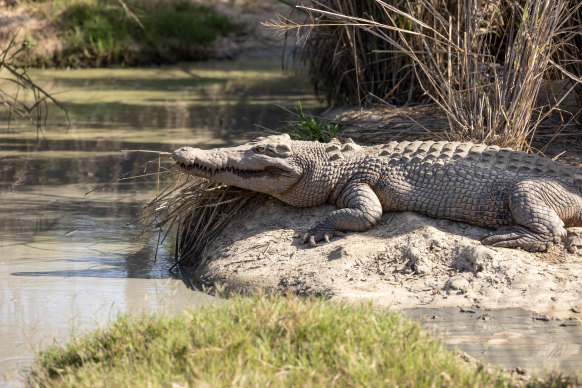
Most fatal attacks on humans in Queensland have occurred between Townsville and the Daintree River, and most victims have been adult males.Credit: Paul Harris
Each year in Queensland, about 50 potentially dangerous crocs are trapped and either removed to farms or killed. “By and large,” says Taplin, “crocodiles prefer to leave people alone. [Given] the number of people recreating along the coast on any one day, if crocs wanted to make humans part of their diet, there would be many more fatalities than there are.”
Before white settlement, Indigenous Australians and “kinga”, as they called salties, did regularly hunt and eat each other, although larger crocs tended to be left alone. Today, Australia’s fatality numbers pale to insignificance alongside those in some developing countries, especially sub-Saharan Africa, where Nile crocodiles kill hundreds annually.
“In Indonesia, at least 70 people [mostly fishermen wading in estuaries] were killed by saltwater crocodiles last year alone, which is double the [toll] in Australia in 50 years!” says Brandon Sideleau, founder of Darwin’s CrocAttack Database. “This is despite Indonesia having vastly fewer crocodiles.”
In Queensland, farmers and graziers complain about crocs eating their livestock. In the NT, crocodiles are livestock, farmed from birth to death (and beyond) in a booming industry that contributes more than $100 million to its economy. The crocs-as-commodities approach began about a decade after they were protected, as a means of persuading Territorians – outraged by a sudden renewal of attacks around Darwin – that living with people-eating reptiles had long-term benefits for them as well as crocodiles.
Led by entrepreneurial crocodilian researcher Professor Grahame Webb, a group of like-minded experts overcame the clamour for a return to mass culling by demonstrating, over time, that “incentive-driven conservation” was economically smarter.
‘They didn’t care if the croc was on a farm. They just wanted to shoot it.’
Koorana Crocodile Farm’s John Lever on an offer he received
The NT now has the lion’s share of croc tourism, croc-themed wildlife parks (including Webb’s Crocodylus Park in Darwin), croc tours, croc research stations, a largely Indigenous croc egg-harvesting program, and seven croc farms that purchase the eggs, incubate them to birth, then grow them in pens before selling the meat, mostly to restaurants in southern cities. Most of these farms are largely owned by French fashion houses including Hermès and Louis Vuitton. Which means that skins – always the main “incentive” in incentive-driven conservation – return less to the local economy than they used to, despite the staggering sums ($US50,000 or more for a single designer handbag) paid for crocodile leather products in the world’s fashion capitals.
John Lever’s Rockhampton farm is among a dwindling few still under Australian ownership. In pre-COVID times, before shifting his focus from selling skins to tourism, Lever knocked back European-based offers of around $3 million for the property. He also rejected an offer from an Italian group that wanted to jet in and shoot a big croc: “They didn’t care if it was on a farm – they just wanted to shoot it. I told them I wasn’t into canned hunting.”
Animal welfare groups are increasingly critical of the industry’s modus operandi, including the way crocs are killed. The farms are state- and territory-licensed but must comply with regulations overseen by the federal government, which recently announced a review of the industry’s 15-year-old code of practice.
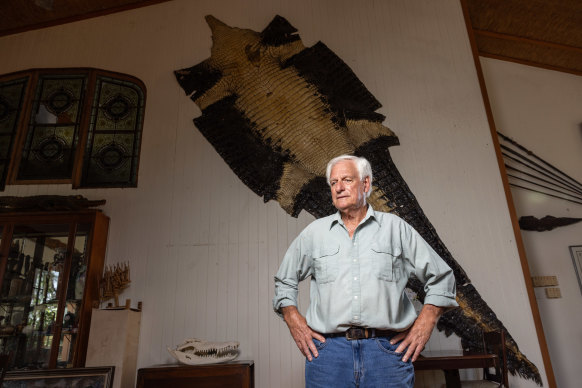
The skin of Buka the black croc on display behind John Lever at Koorana Crocodile Farm, where Buka spent decades after being trapped until dying at almost 100 years old.Credit: Paul Harris
Under the code, crocs can be stunned with electrical charges or fed various chemicals, including valium, as a means of control. The proscribed killing methods are a shot to the head, or severing of the spinal cord and the insertion of a rod into the back of the brain – a process known as “pithing”. Industry practice is to use both methods to be safe, says Dr Sally Isberg, a Darwin-based crocodile husbandry expert who consults with Territory farms about the health and “ethical treatment” of captive crocs. Isberg tells me all farms comply willingly with regulations, and that it’s in their own economic interests to do so. Yet most farmed crocs now live for only a fraction of the 70-odd years they can achieve in the wild, a stark reality dictated entirely by the whims of fashion. “The width of the belly determines the gusset size of the handbag,” explains Isberg. “At the moment, the trend is for smaller handbags, so they want belly skin 25 to 35 centimetres in width.”
Which means that instead of being killed between the ages of three and four, captive crocs now die between two and three. Isberg – a geneticist who established Darwin’s Centre for Crocodile Research – isn’t given to undue sentiment over the death-by-gusset-size imperative. But she is concerned by media terminology involving crocodile attacks, upbraiding journalists for using words like “aggression” and “attack”. Instead, counsels the former Sydneysider, non-fatal attacks should be called “bites”, and aggression should be replaced by “the animal was in fear”. Really?
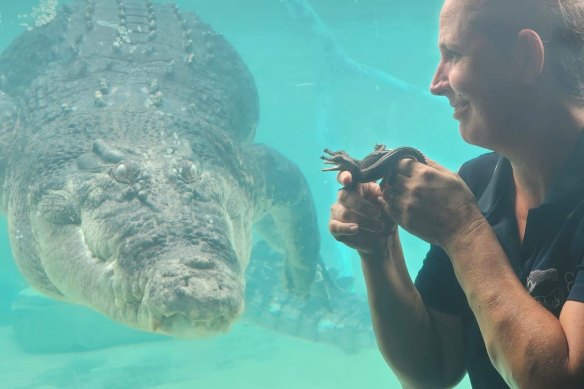
Dr Sally Isberg says crocs are “not mindless killing machines”.Credit: Courtesy of Sally Isberg
Isberg: “When you get to know crocs, they’re not the aggressive, thoughtless predators that the media makes them out to be. Because for you guys it’s all about selling papers, about sensationalising it … [but] they’re highly predictable, routine-based, so easy to train … and, with time and patience, they are incredibly gentle animals – well, perhaps gentle isn’t the right word, but they’re not mindless killing machines.” So she gets quite attached to them? “Absolutely.”
I suggest that bonding with little crocs whose sole purpose is to be chopped up and made into tiny bags for rich people seems a little contradictory. “That’s the paradox, I guess,” says Isberg. “But the bigger picture is that we’re providing those socio-economic benefits back to the Indigenous [communities] … for me, the whole [incentive-driven conservation] system just works beautifully. It all fits together; it’s very synergistic.”
But not everyone buys the rationale. “It’s ludicrous to suggest that they could be conserving wild populations by factory farming 100,000 crocodiles per year,” argues animal activist Alix Livingstone of the Kindness Project. “[It’s nothing more than] ethics-washing.”
In Queensland, only animals that attack people can be killed; under the NT’s problem crocodile management program – essentially a cull by another name – 300-odd crocs are trapped annually in public waterways like Darwin Harbour, in Litchfield National Park and Nitmiluk (Katherine) Gorge, then killed. “Farms in the Territory are already full of removed crocs,” says Grahame Webb. “So now they just get recycled [shot] … when crocs turn up in areas where they’re a risk to people, you have to take them out.”
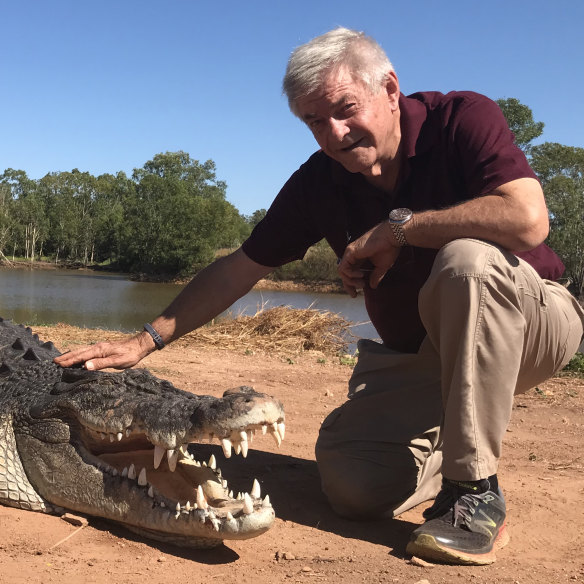
Professor Grahame Webb promotes “incentive-driven conservation”.Credit: Courtesy of Grahame Webb
No distinction is made between large and small crocodiles, a point of difference with Queensland that Webb seems to enjoy emphasising: “If we’d been anal about it and said, ‘Oh well, crocs under two metres aren’t dangerous to people,’ Darwin Harbour would have filled up with crocs. What bullshit! It’s like saying you’re not [removing] any weed until it’s four inches tall!”
Webb reasons that the restoration of depleted crocodile populations inevitably meant they would “start eating people again, and then you’ve got a completely new problem … so you need [different tactics] to deal with that problem”. (Lever agrees, suggesting Queensland will also have to introduce managed culls in the interest of public safety.) Webb says the NT’s “pragmatic” approach to crocodile conservation has seen it targeted by large US- and European-based animal rights organisations, whose appropriation of the “good story” – or perceived moral high ground – has won support among well-meaning Australians.
Why would such organisations target the Territory? Webb: “Because there’s more money in opposing the killing of crocs than there is in the killing of crocs! It has become a massive global industry that raises billions of dollars through donations. In [this case], it’s all engineered for the urban majority in Australia, which is 85 per cent of the population … a lot of whom live in concrete trees [high-rise apartments] and have lost all touch with how things work in nature.”
In parting, Webb can’t resist a final chew on these “sensitive” urbanites: “Maybe we could put a hundred crocs in [Sydney’s] Centennial Park,” he jokes, adding, “I reckon that’d change some attitudes very quickly!”
Crocodiles are both the stuff of nightmares and sustainers of life on our beleaguered planet. I don’t enjoy eating them, but I’m even more averse to the idea of them eating me. Ultimately, of course, the pragmatists are right: dangerous predators in populated areas have to be managed, somehow, for the common good. And if treating captive crocs as livestock is the only way of protecting the species in the wild, it’s difficult to argue with the ever-reasonable Dr Taplin. “I’m not for or against them,” he says of crocodile farms. “I feel sorry for crocs that end up … [as] handbags, but that doesn’t translate into a philosophical position.”
It takes several days after our night on the Fitzroy River before Bobby Vee’s lyrics leave me alone. But the little red eyes themselves remain very much in mind, peeping out into the unknown as they always have, and – hopefully – always will.
To read more from Good Weekend magazine, visit our page at The Sydney Morning Herald, The Age and Brisbane Times.